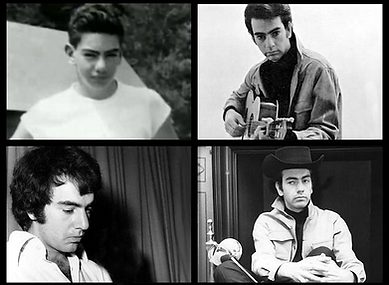


THE 1970s
ALBUMS FROM THE VAULT

The 1960’s proved to be the decade that spawned a host of singer-songwriters, Bob Dylan, Joni Mitchell, Carole King, Cat Stevens, James Taylor, and a young Jewish boy from Brooklyn, New York... Neil Diamond.
During the sixties Diamond spent those early years honing his talents, firstly as a songwriter, and then a performer, it wouldn’t be until the early seventies that
Neil Diamond established himself as a true pop and rock icon, elevating himself to the status of Frank Sinatra and Elvis Presley, where in 1970 he was voted best male vocalist ahead of the aforementioned artists.
The seventies were to be the hit time for Neil Diamond, not only that, he would cement his position as possibly the finest songwriter around, and also become the touring and “Live” phenomenon he is known as being. The albums featured in this series showcase Neil Diamond’s immeasurable talents as a songwriter first and foremost, and it is no surprise that nearly every album released by Neil during this period went Gold or Platinum. These albums also highlight Neil’s great ability as an interpreter of other artists’ songs; they show his stylism, and how he has managed to bridge the gap between generations, where he has possibly the broadest fan base of any artist. Neil Diamond’s music covers all genres, there is Pop, Rock, Jazz, Country, Gospel, Classical and World music, Neil Diamond appeals to all music fans, and is reason why he has maintained his standing in his chosen career, and continues to thrive long after many of his peers have been and gone. So, listen in, and enjoy the musical ride of a lifetime by one of music’s most enduring and defining artists. - Dave Radstock
HOT AUGUST NIGHT
1972
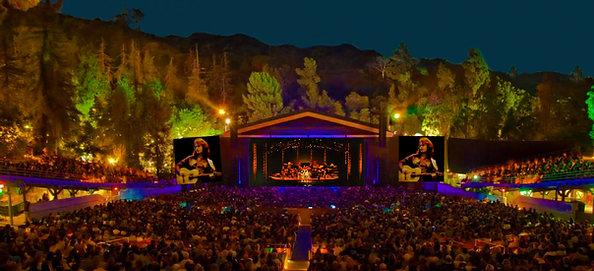
"The stage, she is the God-damnedest woman you ever saw." - ND 1972
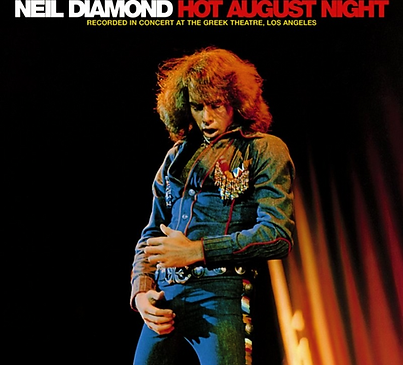
Thursday, August 24, 1972, A hot, sultry summer night, in California they call it earthquake weather, with the air hanging heavy over the open, glistening shell of the Greek Theatre, over 4,500 people comfortable on the broad seats, over the countless others, the “tree people” clamboring up the mountain and in to the surrounding trees, casting eerie shadows against the walls, anything to have a glimpse of the stage, and of the man who will fill it.
Hot August night, and many of the people had been there on Tuesday, and Wednesday, and will be there again on Friday, and the nights after that, because after all, Neil Diamond has come back to the Greek.
Then, softly, the music begins, the lights dim Slowly, the heavy fire doors roll back; the music rises, the stage is a smoky, opalescent jewel in the darkness. But one light shines brighter than the others, a white pool in the brilliance, and, for an instant, sound hangs suspended, only the air breathing.
Then he’s there, the crowd exploding. Neil Diamond as casual as if it’s the most natural thing in the world, those 5,000 people demanding his soul. And for the next 107 minutes, he gives it to them, a spontaneous, exhausting display of energy and sensuality. And the people are right there with him, screaming, and cheering, and applauding, and beseeching, knowing all the words to all the songs, but hearing them as for the first time, because that’s what Neil Diamond gives them, singing as though he too was just discovering the heart and soul of the music, every number unique and exhilarating.
Too soon, almost before the moment is realised, it’s over. The encores, the ovations, the bows - Neil Diamond has gone, in joy and triumph. And as the people begin to leave, reluctant, unwilling to relinquish the intimacy and sensation, the silence again settles on the Greek, heavy and still, until the next evening, when once again, Neil Diamond will shatter the hot August night.

The first disc of the two record set concludes with two of Diamond’s 1960’s hits, ‘Shilo’ and ‘Girl You’ll Be A Woman Soon’. The two songs form part of a mini-suite on the album, where arrangements of well known hits stayed close to the originals, ‘Shilo' and ‘Girl You’ll Be A Woman Soon’ find Diamond and the band varying the textures to some extent, ‘Shilo’ for example, features an unexpected, but highly effective mandolin solo, “Girl”....was delivered in line with the confessional singer-songwriter style that was all the rage back then.
The second disc opens with ‘Play Me’ and receives the full treatment making full use of the strings; a highlight of the song is Richard Bennett’s beautiful guitar solo, complimenting Neil’s passionate delivery of the song. ‘Canta Libre’ follows, a beautiful, mellow song which talks of liberation and freedom, its Spanish lyric adds to the poignancy of the song, and also a sense of romance. The next song is possibly one of Neil Diamond’s greatest compositions, ‘Morningside’
the theme is heartbreakingly sad, and the feeling and mood is sombre, (I have compiled a singular piece on this song to be found in Concert Songs) The album continues with some of Diamond’s most successful songs of that era, ‘Song Sung Blue’, ‘Cracklin’ Rosie’, and ‘Holly Holy’ which opens another kind of mini-suite, on the theme of spirituality and self-knowledge. The delivery of ‘Holly Holy” is Diamond at full throttle, as the music rises so does Diamond’s voice, almost moving into a tribal scream, the strings give the performance an air of superiority, and rightly so, it is an immense performance, where the audience are quick to acknowledge the greatness of the performance, with a long and deserved ovation. It sounds like the ending, however the proper conclusion is reserved for the next song, ‘I Am...I Said’, his most personal and self-analytical song, the performance is highly theatrical, with intense dynamic changes, and Neil in full-throated glory, as Neil and the backing singers and band take their bows, the orchestra reprises the chorus, a majestic and sweeping arrangement. However, Diamond returns for an extended encore, a medley of his African influenced ‘Soolaimon’ and his gospel inspired ‘“Brother Love’s Travelling Salvation Show’, by the time Diamond is halfway through this tour de force, his voice is raspy, the Greek Theatre shows were long affairs, but the encore medley is a stunning display of Neil Diamond’s command of a variety of styles and moods, both as a singer and writer.
A hot August night it was, and Neil Diamond had triumphed and demonstrated that he had a wider stylistic range than what the critics gave him credit for, much more than that, he had shown he was a force to be reckoned with, on stage in his performances, and in his song writing.
I would say, for anyone who has never heard this album before, and is looking for something that will leave them spellbound and completely exhausted of all emotions, I really envy you, for you, unlike the millions who already own this album, still have the joy of listening to something that is really unique, for the very first time. Rarely have a combination of songs, performer, and audience, come together so comprehensively as one, in such an emotionally charged package, from classic love songs, to fever pitched gospel, Neil Diamond takes you on a rollercoaster ride of moods, the energy and sensitivity of his performance has never been equalled, you cannot fake an audience reaction, the like of which that was demonstrated after Neil’s stunning rendition of ‘Holly Holy’ something magical happened that night, and in some way, I am glad it wasn’t captured on film, as my own mental image of the whole performance adds to the appeal. For the whole duration of the concert, I am slap bang in the middle of the audience. When listening, put a “Do Not Disturb” sign on the door, with a bottle of “red” nearby, and enjoy the experience you can relive time and again... but to listen for the first time, I really do envy you, this really is the yardstick by which all other live albums are measured.
Firstly an admission, I was reluctant to do a piece on this album, I made a statement that everything had been said about the album, and didn’t want to exhaust, or repeat what had been said before, but then, how could I not pay tribute to possibly
Neil Diamond’s most celebrated album.
Recorded “Live” at the Greek Theatre, Los Angeles, ‘Hot August Night’ captured
Neil Diamond during one of his performances of his ten-night stand at the theatre.
The particular concert in question was to be a career defining moment for
Neil Diamond, where it is claimed, the Neil Diamond phenomenon was born on the stage of the Greek Theatre 1972, where that series of concerts were to catapult
Neil Diamond into the music stratosphere. The critics raved. Frank H. Lieberman of the Los Angeles Herald Examiner, stated, “Until Monday, Neil Diamond appeared to be just another top flight contemporary artist on the Greek Theatre summer line-up... at about 10:30pm Monday, following a couple of encores and standing ovations from the audience, he became number one, having presented the finest concert, in artistic and production sense in Greek Theatre history.” One particular night was to be captured on record, where the sleeve notes set the scene wonderfully.

The critics were quick to dismiss Diamond’s music as lowest common denominator pop, but would have to admit that up to and including ‘Hot August Night’
Neil Diamond, more fully than any other artist at that time connected the early 1960’s “Brill Building” song writing style with the early 1970’s. The listener, myself included, might detect a healthy detachment in Diamond’s performance of his works. In fact, it is possible to hear Diamond as a songwriter, who happens to write for a client, also named Neil Diamond, this, to his credit, makes his work of the end of the 60’s and beginning of the 70’s different from the overly confessional work of members of the singer-songwriter genre, and is reason why this particular work is so revered.
The album opens with an overture from his ‘African Trilogy’ and sets the stage for Neil’s entrance. It starts with strings and slowly builds to include every instrument in the band and orchestra, this inspired touch is understated enough that it removes any pretence, but adds to the sense of anticipation of what’s to come ... just before the crescendo Neil Diamond is there, and launches into ‘Crunchy Granola Suite’ introduced by a lively and ringing guitar, Diamond and his band quickly move into ‘Done Too Soon’ a tribute to famous and infamous figures from the past who had died relatively young, a song which cites Jesus Christ, Mozart, Bogart, what is interesting is how Diamond has the audience in the palm of his hand so early on,
as he managed to change tempo and mood so effectively.
Neil Diamond then addresses the crowd, and makes a connection with the “Tree People” after the introduction where he states that “This is going to be special…”,
he moves into ‘Solitary Man’ one of his biggest hits at that time, this is followed by an elongated version of ‘Cherry Cherry’ starting with a vibrant guitar intro, and then piano builds to fill out the piece, and then Neil’s rock like vocals giving it a new vibe, it is interjected by Alan Lindgren’s piano solo mid-point. It is interesting in how Diamond has crafted the song for a “live” performance, and it works fantastically well. ‘Sweet Caroline’ is hot on the heels of ‘Cherry Cherry’ and slows the pace down
a little, the arrangement makes effective use of the string section and backing singers to simulate the hit single’s scoring.
The next two songs are ‘Porcupine Pie and ‘You’re So Sweet’ both have a rich country feel, and focus, and are wholly tongue in cheek.
‘Red Red Wine’ follows the same country style with a theme that returns Diamond’s persona to the loser in love of ‘Solitary Man’ this is followed by a comic song ‘Soggy Pretzels’, which showcases Diamond’s humour, ‘And The Grass Won’t Pay No Mind’ allows Diamond to slow the pace again and have the audience reminisce, and is an effective recollection of young innocent love.
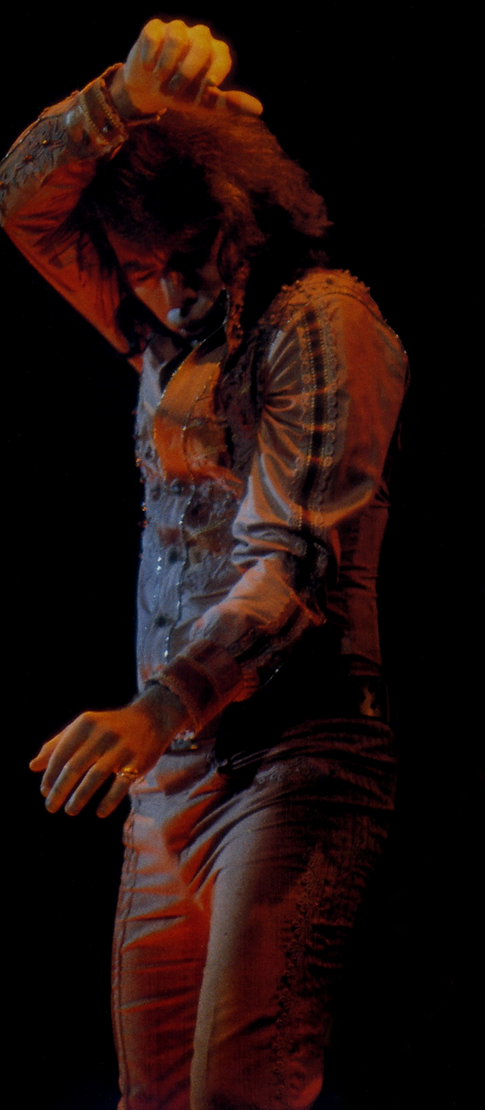
"Hot August Night was the big turning point. That magnetism that people think of with Neil Diamond was born on that night. He knocked them dead. Neil came through a cloud of smoke and the audience just exploded. It was the first time I saw him confident on stage ..... That was chemistry."
- Lee Holdridge (Composer & Conductor)
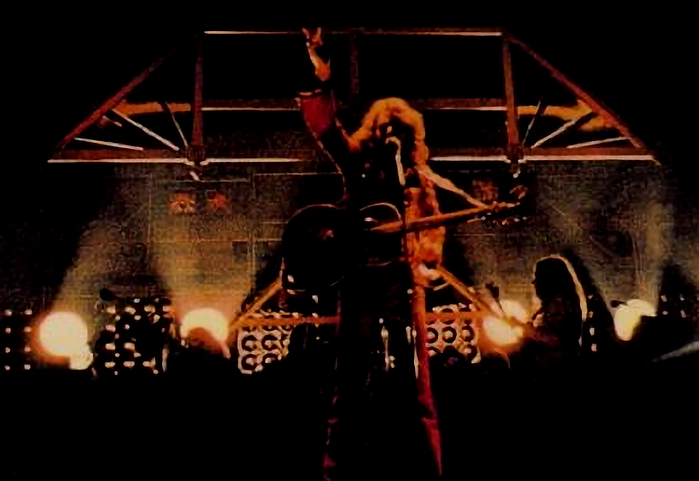
“ELECTRIC...His audience falls like plums at his feet.” - TONE Daily Variety
“More of a triumph, in every measurable way, than his stunning show last summer at the Greek… Most of all, Diamond gave of himself.”
- ROBERT HILBURN, Los Angeles Times
“He moved the audience through many moods, from joy to sorrow...” - SUE CAMERON The Hollywood Reporter
“I enjoyed the outstanding theatrical experience of my life, due to the unsurpassed and almost hypnotic talents of Neil Diamond.” – JAMES A. DOOLITTLE General Director, Greek Theatre Association
“The lean sensual performer was A TRIUMPH” - MICHAEL CARMACK Los Angeles Herald-Examiner
NB: 'Hot August Night' was reissued in 2012 to commemorate the 40th anniversary of the stunning series of concerts and album, it includes additional tracks: 'Gitchy Goomy’ the Randy Newman classic, ‘I Think it’s Going To Rain Today’, ‘A Modern Day Version Of Love’, ‘Walk On Water’, ‘Kentucky Woman’, ‘Stones’, and Musician intro’s. These tracks add another element
to the original issue, and do not detract from it in any way, but in fact, lift it to another level, where the concert sounds more complete.
TAP ROOT MANUSCRIPT

1970

I have the original vinyl LP copy of this album, stored neatly in a box with all my other Neil Diamond vinyl albums, it must have been a true labour of love for Neil Diamond, everything about it was lovingly wrought, including the packaging. Imagine my disillusionment when having to purchase the CD version, gone was the gorgeous design work of art director
John Le Provost, designer Virginia Clarke, photographers Jim Metropole, and Larry Bartome, and calligrapher Jonzarr Haber.
The original album cover had a satisfying heft to it, being printed on incredibly heavy textured stock, although it housed a single record. It folded out like a double album, revealing the other half of the moody, introspective image that began on the front cover, and continued on like a Cinerama movie screen. Included inside was a booklet, printed on fine writing paper, supplying the lyrics for 'Childsong', 'I Am The Lion', 'Soolaimon', and 'Missa', (in both English and Swahili) in earthy sepia calligraphy, it also included Neil Diamond’s own explanation of the concept of the album.
Sadly, this inscription and the other extras were left off the reissue CD, gone are the printed lyrics, the quality paper, the calligraphy, the credits, and all the other features that gave 'Tap Root Manuscript' it’s air of earnest dignity.
If I was Neil Diamond, I would be peeved, heck, I’m not Neil Diamond, and I’m still peeved. Nonetheless, the music still remains.
Fifteen years before Paul Simon recorded and released his ‘Graceland’ album, Neil Diamond took a leap into world music with this sweeping opus, a foray into the music of the African continent, and how he delivered, capturing the very essence of the people and their lives.
The album features twelve tracks, the first five are now recognised as Neil Diamond standards, Cracklin Rosie, which gave Neil his first number one single, ‘Free Life’ a bouncy bluesey number, the beautiful ‘Coldwater Morning’ one of Neil’s finest compositions at that time, and one we don’t hear enough of, ‘Done Too Soon’ a lament of famous and infamous people who had shaped the world in some way, and possibly inspired Billy Joel’s, ‘We Didn’t Start The Fire’ and a fabulous reading of the Hollies classic, ‘He Ain’t Heavy, He’s My Brother’ where one would believe this is an actual Neil Diamond song, in fact, Neil recorded the song before the Hollies, but is more recognised as a Hollies’ song.
The second half of the album is the 'African Trilogy' starting with 'Childsong' which is exactly what it is, a song sung by children, this is followed by “I Am The Lion” it opens with what can only be described as a tribal warrior chant...
Hey, hey, hey, hey, hey, hey
Babaladinga
Hey, hey,hey, hey,
Babaladinga hey
The music is vibrant and one can imagine being on that African plain, the guitar and steel drum and bells create that wonderful feel of Africa, it is said the song is about not solely a lion, but of how the father is the “Lion” of his family.
The next piece is Madrigal, a Madrigal is described as a part song for several voices, yet this is wholly instrumental, whenever I listen to it, I imagine myself being on an African Safari, seeing the majestic animals. The music is very carnival like, and uplifting, the end of the piece introduces 'Soolaimon' meaning hello, or welcome, or even goodbye, I have described the song in the “Concert Song” series, likening it to a gospel chant, 'Missa' follows 'Soolaimon' I wasn’t sure what the meaning of 'Missa' was, so I researched it, I discovered it was overtly Christian, and translates as....
“Christ, Christ, Christ, I shall meet him... A child has been born, Christ, Gloria!”
Neil Diamond remains the only artist to acknowledge the explosion of Christianity in Africa, and to link it to American gospel music, though at times, 'African Trilogy' sounds more like traditional choral music and chant than gospel.
The 'African Suite' that follows 'Missa' sounds like an ending, but also pulls the whole suite together, it is the central theme of the album, it’s sweeping arrangements transport us to the heart of Africa, it’s people, it’s landscapes, it’s sullen skies before the monsoons, the sounds, which culminate in a crescendo, taking extracts from the other pieces from the work, and leads into a reprise of 'Childsong' heralded by a clap of thunder.
Once again the album was impressive, and again was masterminded by the talented trio of Tom Catalano, producer, Lee Holdridge, conductor, and musical arranger, and Armin Steiner, sound engineer.
The 'African Trilogy' has to be heard as a complete piece of work, and I am grateful that the CD kept true to the original continuity of the album, without the standard five seconds or so of silence in between tracks.
I had to search out the vinyl album to compile this piece, I am glad I did, as I had forgotten how wonderful the whole package is, music aside, there is something wholly satisfying, and equally gratifying with albums of yesteryear, the physical item is far better than the many dour CD formats, they are in essence, singular works of art.
I will not select a particular track to include, I will leave that task to webmaster, Doug, as I believe he will provide suitable embellishments to enhance the narrative of the album.


GOLD - RECORDED LIVE AT THE TROUBADOUR - 1971
Though ‘Hot August Night’ is regarded as the definitive Neil Diamond “Live” album, ‘GOLD’ showcased Diamond in his early pop-rock beginnings, and removed from the slick sophistication that made him a superstar.
Recorded at Doug Weston’s Hollywood club, 'The Troubadour', it provides an opportunity to hear Diamond in a looser, and more rock-oriented setting than he would ever attempt on vinyl again.
Leading a small raucous band with breathless enthusiasm, Diamond pours sweat and energy into numbers like, ‘Thank The Lord for The Night Time’, and ‘Cherry, Cherry’ giving them a satisfying, raw, rock and roll spirit.
As befits a gig of this type, ballads are kept to a minimum, in favour of upbeat material, and Diamond’s personable, unpretentious delivery on the album, saves songs like ‘Sweet Caroline’ and ‘Lordy’ from the bloated schmaltz, that listeners either love or loathe him for.
By the climax of ‘Brother Love’s Travelling Salvation Show’, Diamond has sung himself hoarse, and the connection with his audience is evident.
There are only ten tracks on the album, and was probably intended as a Radio broadcast for the American Forces, as Neil states in his dialogue preceding ‘Solitary Man’ however, there are some fabulous versions of now well recognised “Diamond” songs, a beautiful reading of Joni Mitchell’s ‘Both Sides Now’ a rarely heard song ‘Lordy’ and an even rarer live version of one of Neil’s finest compositions, ‘And The Singer Sings His Song’.
As Neil’s career exploded in the years to come, there would be no more intimate venues like the Troubadour, where his music would swell in size accordingly.
‘Gold is likely to sound thin and unpolished to the legions of fans who made Neil Diamond a top concert draw for his mega-hit ballads, but it is a great snapshot of the singer/songwriters ‘Brill Building’ stylism, and the end of his hit-making Rock and Roll days as he began his ascent into adult contemporary superstardom.

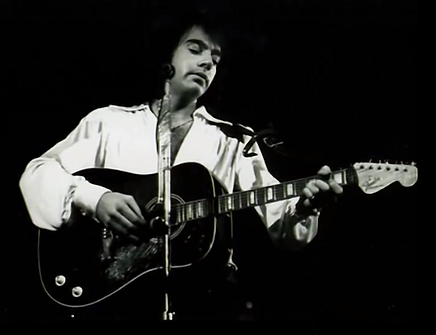
"On stage Diamond radiates the same excitement that has made pop stars from Sinatra to Presley, and it's a sensation that can't be described, only felt."
- Cashbox October 4, 1969

'STONES' - 1971
Driven by the singles ‘I Am... I Said’, and ‘Crunchy Granola Suite’, ‘Stones’ was a stronger album than the late sixties records put out by Neil Diamond, this also marked a change of direction by Diamond where rather than pad the album with self penned originals, Diamond chose several fine covers to fill out the remainder of the album.
This album was part of a glorious phase of his writing that spanned his years with MCA.
The album opens with the truly superb ‘I Am... I Said’, with its gut wrenching plea for acceptance in the final refrain, and is probably one of his best ever songs. Normally a quick worker, Diamond spent four months agonising over the lyrics of
‘I Am... I Said’, and it shows. That’s why the song lingers. There are lines which appear not to fit at first, and appear almost fragmentary coming from such a craftsman, but they are the lines, which - once the penny drops – give it its confessional greatness, a song which moves the audience to self investigation. Certainly it’s a masterpiece of introspection which transcends conventional pop limitations.
There are only three original songs on this album, the aforementioned
‘I Am... I Said’, ‘Crunchy Granola Suite’, and the title track ‘Stones’ great though these tracks are, the album is really a showcase for Diamond to illustrate his tremendous gift as an interpreter of other artists' works. Tom Paxton’s
‘The Last Thing On My Mind’, Jacques Brel’s ‘If You Go Away’, Leonard Cohen’s ‘Suzanne’ and Randy Newman’s ‘I Think It’s Going To Rain Today’, not forgetting Joni Mitchell’s ‘Chelsea Morning’, and Roger Miller’s ‘Husbands and Wives’.
All of these interpretations are nothing short of magnificent. Diamond’s voice has a deepness and a richness of emotion that seeps into your brain, and paints visual images that take you into a series of mini-tragic vignettes.
On this album Neil Diamond, moves onto the next level of his development, he suddenly becomes bigger in stature. Like many artists, there is a period that they move up a gear, and start leaving the others behind, and on this album Diamond has left his peers in his slipstream.
The title track ‘Stones’ is vastly overlooked, a tremendous song that puts across perfectly a sense of yearning, and of belonging to something and someone special. It speaks of love poetically, where the listener is transported to the almost dreamlike state of the song.
Stones would play, inside her head
And where she slept, they made her bed And she would ache, for love And get but stones....
It is vivid in the images it paints, and powerfully sincere, whilst being wistful and romantic.
‘Stones’ was typical of Neil Diamond’s output back then, pulsating with an unrivalled intensity, as ‘I Am... I Said’ attests, he was coming to terms with fame, while battling internal demons.
No other artist hit the spot so consistently as Neil Diamond at that time, and his fight to keep his career and his spirits ascending, lies the magic of ‘Stones’, and it was no surprise that he would follow this album with another of unrivalled brilliance... ’Moods’.


‘Porcupine Pie’ is the second track, and is a tongue in cheek ditty about various strange food dishes, once Porcupine Pie gets in your head, (or on your Jeans) you are in for a good time, how can you not be hooked on a track that speaks of “Chicken Ripple Iced Cream”, goodness in abundance.
‘High Rolling Man’ follows and is a light pop song about status, and privilege...
He’s a high rolling man
In a high rolling neighbourhood
The album takes a turn into the realm of majesty with one of Neil Diamond’s finest compositions, ‘Canta Libre’ a song of lyrical beauty seldom heard, speaking of freedom and liberty...
I got music running in my head
Makes me feel like a young bird flyin' Cross my mind and laying in my bed Keeps me away from the thought of dyin'
It is poetically haunting, and delves into the deep spirituality within the human condition.

'MOODS' - 1972
Every artist has one. An album that defines them as musicians and elevates them to the higher echelons of the industry, from Elton John’s ‘Goodbye Yellow Brick Road’ to
Paul Simon’s ‘Graceland’ notwithstanding many others like Meatloaf’s ‘Bat Out Of Hell’.
This Album ‘Moods' by Neil Diamond is one such album. At the heart of it is
Neil Diamond’s immense talents as a songwriter. The title of the album isn’t immediately understood, only when one immerses themselves into it, does it become clear, as Neil Diamond weaves a tapestry of musical poetry, and colour, and dare I say, ‘Moods’ taking the listener on a ride of musical majesty.
There are eleven tracks on the album each one showcasing Neil Diamond’s stylism, opening with the infectious ‘Song Sung Blue’, a song so simplistic it could sit quite easily as a nursery rhyme, and yet it contains an underlying melody inspired by one of the classical masters, Mozart’s 'Piano Concerto #21', whilst no-one could accuse
Neil Diamond of plagiarism, the similarities in the melody are uncanny.
Song Sung blue, everybody knows one
Song sung blue, every garden grows one
Me and you are subject to
The blues now and then
But when you take the blues
And make a song
You sing them out again
Sing them out again
The song gave Diamond a number one hit, and became his biggest hit at that time.
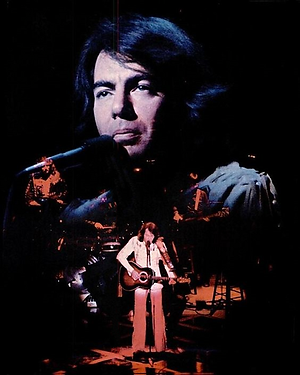
‘Captain Sunshine’ is a wholly mystifying song, where it isn’t clear who or what it is about, had it been written by anyone else, it would surely be a “drug” song, however, being from Neil Diamond, it remains a cryptically haunting song about a someone or something, that lifts his spirits when he feels down...
Captain Sunshine
Make me drink wine
Make me feel fine
When I’m feelin' wrongly down
He don’t take much He don’t make much
But ah, to be a man such as he And walk so pure
Between the earth and the sea
Neil Diamond dedicated a most poignant performance of this song to long time percussionist Vince Charles after he passed away in 2001.
‘Play Me’ continues the genius of the previous songs. A complete and starkly beautiful song relating to an almost spiritual relationship, (see narrative of this song in The Concert Songs Series). ‘Play Me’ remains one of Neil Diamond’s all time standards, a song of immense proportion, where the melody is heavenly.
‘Gitchy Goomy’ is a little lesson in philosophy to a little kid, spoken half in “baby talk” and half grown up, it suggests you would have to be either two years old or an adult to understand it. It’s a philosophy lesson in realizing that you can’t teach kids anything, they learn everything by themselves, and take more from example than from teaching...
Gitchy goomy, Gitchy gaddy
Sit your laddie down on your daddy’s knee
And ain't it a nice place to be
Goggin noggin, papa’s rockin'
Like a mockingbird in a windy tree
And that aint no place for me
It’s a wonderful and simplistic clever use of rhyme, which delivers a wonderfully catchy song.


‘Walk On Water’ follows, and straight away you are grabbed by the strong religious and holy overtones within the song, it almost has the same revivalist feel of ‘Brother Love’ ...
Walk on water, ain’t it like her
She leads the children
Ain’t it right, ain’t it right, ain’t it right
And ain’t it wonderous,
Ah the way she does it Gives love and loves it
Ain’t it right, ain’t it right, ain’t it right
Then follows the fabulous chorus, inspiring and magnificent...
Light de light we got mornin'
Mornin’ makes another day
Glory sight, got de dawnin’ Lordy light the night away
‘Walk On Water’ is a reassuring and affirming song of religious grace, and spirituality.
The next two tracks are solely music compositions, the first being titled ‘Theme’ and is as haunting as it is beautiful, a mere one minute long, it leads beautifully into ‘Prelude in E Major’ which is the prologue to the final track ‘Morningside’.
Throughout his career, Neil Diamond has written many beautiful songs, but there are few that can stand equally alongside ‘Morningside’ for sheer lyrical beauty and perfection, (I have compiled an in-depth piece on this song as part of The Concert Songs Series). The only thing I can add is that this song sums up and epitomises everything about Neil Diamond, the songwriter. It is beautiful, at times joyful, but in its entirety, it is heartbreakingly sad, where the listener will feel immense sorrow for the old man within the song, and lament for the gift he left behind for his children.
I began this article by speaking of how particular albums have defined many artists via the brilliance of a stand out piece of work. This album ‘Moods’ defines Neil Diamond as a songwriter of immense ability, both lyrically and musically.

The strength of the album is in part due to the incredible trio of colleagues who were a regular part of Diamond’s early seventies albums, Lee Holdridge’s masterful arrangements and conducting, Tom Catalano’s subtle production, and Armin Steiner’s skillful engineering.
The ‘Moods’ album received high praise for its brilliant and diverse material, and was generally acknowledged to be one of the most important projects of Neil Diamond’s career in terms of defining his signature sound for the future. Within the industry and by music professionals, ‘Moods’ is considered to be one of Diamond’s better and more creative recordings. The album received a Grammy as best album of 1972, and ‘Song Sung Blue’ was voted best song of that year.
JONATHAN LIVINGSTON SEAGULL
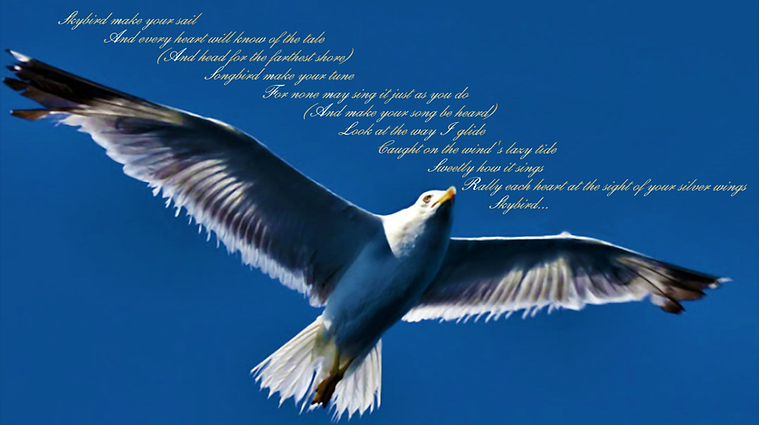
1973
"I don't want to be Jonathan's voice, I want to be his heart." - Neil Diamond

Fifty years ago, Buddhism had permeated the pop culture of the day, influencing artists from the Beatles to American author Richard Bach. In the eponymous novel, “Jonathan” is a seagull cast out of his flock for daring to suggest that there is more to life than squabbling over food scraps. With his talent for flying, (the reader is encouraged to put aside the obvious point, that all seagulls have a particular talent in this area) and wanderlust, powered by an eternal curiosity. Jonathan rises to new levels of consciousness, and discovers that heaven is not a place, but a state of mind, and that all things are possible for those who dare to dream.
The novel was first published in 1970, and became one of the most famous US novels of the 20th century, and is still in print today.
Filmmaker Hall Bartlett decided in 1973 that the tale was suitable for the big screen, despite the seagull-heavy nature of the characters, and the fact there was no such thing as CGI (Computer-Generated Imagery) back then, obvious material therefore for animation one might think, but for Bartlett it was a live-action extravaganza, or nothing.
To this end he needed a score, and it was with that in mind, he turned to the immeasurable talents of Neil Diamond, who at that time was recognised as possibly the world’s finest songwriter and composer.
The album was full of music and songs about seagulls, flying, and oceans crashing into sandy shores, should you live in a coastal town lined with beaches, and heavily populated by these supposed “flying rats” of the shoreline. You will recognise that “Jonathan” the celebrated seagull on the album, was not the loud, squawking, and squabbling ill-tempered irritant to be found on sand dunes and in picnic areas, but the lone and silent white span of wings, swimming through the air currents far above.
Presented in story order, the music feels very much like a journey, beginning with the soft and rhythmic brass and percussion of the ‘Prologue’ introducing what would quickly become the signature fanfare of the album. Those same iconic motif’s continue in ‘Be’ where the listener meets “Jonathan” for the first time, “Lost on a painted sky”, discovering freedom away from the flock, and the joys of flight, it’s a lovely tune, with sweeping orchestral accompaniment, and haunting strings. Religious undertones occasionally come to the surface on the album, references to God, Dear Father, Gloria, and Holy, where Jonathan’s voyage of discovery could be described as a religious experience.
‘The Odyssey’ marks the turning point of the album and the story, in which “Jonathan” begins his journey to higher planes of being. An instrumental medley of the main fanfare ‘Be’ ‘Lonely Looking Sky’, and ’Dear Father’, consolidates the story so far, the highlight is the instrumental of ‘Lonely Looking Sky’ proving it is as powerful with strings in place of vocals.


Skybird make your sail
And every heart will know of the tale
(Head for the farthest shore)
Songbird make your tune
For none may sing it just as you do
(And make your song be heard)
Look at the way I glide
Caught on the wind's lazy tide
Sweetly how it sings
Rally each heart
At the sight of your silver wings
Skybird...
Whilst Jonathan Livingston Seagull is widely recognised as a
Neil Diamond album, it is no coincidence that the exquisite album that preceded this one, 'Moods' was produced by Tom Catalano, arranged and conducted by Lee Holdridge, and engineered by Armin Steiner.
You may ask why I make this point, well, this same trio did exactly the same on this album, and turned out another masterful production.
The music of Jonathan is sumptuous, and for that, Lee Holdridge deserves a lot of credit for his involvement, how such a majestic piece of work can be attributed to just one man, (Neil Diamond) seems unjustified.
However, it is a Neil Diamond album, and we cannot, and should not understate what Neil achieved with this album, Lyrically, and vocally, Neil Diamond is at his absolute best, Neil’s endless research resulted in him embarking on a rigorous educational foray into philosophical, and spiritual thought, besides a great deal of reading. His studies included interviews with a Hare Krishna convert, and sessions with an Indian yoga master.
The breakthrough for Neil came when he wrote the words, “God Being” then just the word “Be”, Neil described the moment as knowing how he wanted to approach the project, “Everything seemed possible, my heart started to palpitate."
Straight away you are drawn into Jonathan’s story, and from there, the majestic and sweeping music takes you on a spiritual journey of inner reflection and deep joy.
The songs are of a quality seldom heard, the sense of loneliness of ‘Lonely Looking Sky’, and the hymn like ‘Dear Father’, elevate the album higher still, the jaunty ‘Skybird’ is refreshing and optimistic. It could be said that Neil Diamond came as close to finding God with this masterpiece.
Neil Diamond had studied symphony writing which helped him compose “Jonathan” the whole album was on a level you rarely come across in modern music, lyrically, musically, and vocally, and so removed from Neil Diamond’s usual oeuvre, which cemented his standing as possibly one of the greatest composers of the modern era.
To this day ‘Jonathan Livingston Seagull' stands as one of Neil’s best selling albums, and could be regarded as his greatest compositional achievement.
It is nigh impossible to select a particular track from the album to feature, but I will settle on ‘Skybird’ for the message of hope it conveys.

SERENADE - 1974
"A Serenade, a hymn of sorts, at most a small potion for the soul." - ND
In the pantheon of great albums, there are those that stand out above all others, much like an Einstein equation to an accountants column of figures, this Neil Diamond offering, 'Serenade' is one such album.
Let us make no mistake here, this isn’t an album that you would take to a house party, but it can be regarded as Diamond’s magnus opus of the 70’s, one could argue the merits of ‘Jonathan Livingston Seagull’ for that honour, but this small collection of eight songs sum up Neil Diamond’s greatest writing skills in every measurable way; it is classic poetry set to music, it is the musical equivalent of the finest pre-Raphaelites painting.
Neil Diamond is blessed with a god given talent for writing. His richness of lyric presented with a variety of melodic backdrops has the ability to touch the soul.
The first track, 'I’ve Been This Way Before' is kind of misplaced, as one would think it should be the final song, however, it is a fabulous ode, exploring the concept of reincarnation, and of the legacy left behind when departed -
I’ve seen the light
And I’ve seen the flame
And I’ve been this way before
And I’m sure to be this way again...
‘Rosemary’s Wine’ tells of an almost spiritual seductress, where the man is captivated by her, and yet cannot relent to her entreaties, to the point he becomes distant and cold,
as the lyric suggests -
Lately I, seem to be inclined
More to being cold, less to being kind
And I suppose that I've been less than true
Being what I am, what was I to do...
The most majestic piece on the album is ‘Lady Magdalene’ (see individual article on this song in Concert Song Series.) It is a triumphant, and masterful song, and wholly brilliant.
'The Last Picasso is a tribute to the post Renaissance painter Pablo Picasso, and speaks of a yearning of what has been lost, whilst conveying a sense of emptiness without his artfulness.

The most recognised song on the album is ‘Longfellow Serenade’, it is as Neil Diamond himself said, “Of a man who sets out to win and to woo his woman", via the devious use of poetry, the lyrics within the song tell the story perfectly -
Longfellow serenade
Such were the plans I made
For she was a lady
And I was a dreamer
With only words to trade
You know that I was born for a night like this
Warmed by a stolen kiss
For I was lonely
And she was lonely...
‘Yes I Will’ talks of Neil trying to be all things to all people -
Yes I will
Indeed I will
If I may, if I might, if I can...
Reggae Strut is just that, a reggae flavoured song, the final song, ‘The Gift Of Song’ is Neil celebrating music and what it has given him, and his many fans.
‘Serenade’ is a majestic album, in its quiet way, it defines so much, yearning is at the heart of the album, which makes it such a joy, for the ears, as well as the soul.

So I drink, the sweetness of her soul...
"I'll weave this web of rhyme upon the summer night..."



I'

“Tin Pan Alley died hard, but there was always the music to keep you going.” - ND (1976)


This album announces its ambitions on its cover, which displays the skyline of Manhattan under a red horizon, and a black sky, overlaid with the words, "Produced by Robbie Robertson", this tells us that Diamond wanted to convey that this album, ‘Beautiful Noise’ was an event, and that he had convinced his Californian neighbour to work with him, and also Robertson possessed the kind of rock credentials Diamond had never been granted. Furthermore, as the ominous cover and Diamond’s record sleeve epitaph indicate, 'Beautiful Noise' was intended as something of a concept album, Diamond’s look back at his days as a scuffling denizen of the Brill Building in the early sixties.
I don’t consider ‘Beautiful Noise’ as a concept album, not in the way ‘Jonathan Livingston Seagull’ was, and also ‘Tap Root Manuscript’. To me, ‘Beautiful Noise’ is a series of poignant and nostalgic reflections of a songwriter’s life in New York in the sixties.
Neil Diamond writes in his liner notes on the album, that the 1960’s, was a period that some have called a Renaissance of the American spirit, others, the beginning of a new age of decadence. It’s difficult to disagree with either statement, where perhaps the song which best illustrates this is the evocative ‘Dry Your Eyes’ a lament to all things lost in the 1960’s, JFK, Robert Kennedy and Martin Luther King Jr. (There is a piece dedicated solely to this song on this website).
The opening song, ‘Beautiful Noise’ being the title track is masterful, most composers write lyrically about fields and fjord’s, but there aren’t many that take their inspiration from the sounds of the city. There are numerous songs about New York, but none celebrate how the city actually sounds as well as this one, it places you at street level, car horns and all.

If ‘Beautiful Noise’ represents the bright, and breezy upside of the city, ‘Street Life’ portrays the seamier, sleazy downside, surprisingly hard edged for a
Neil Diamond song -
Hey, let me show the street life
Hey, let me show you the finks
The punks, the judge, the junkies
Stay close to me for a while
For a while, for a while
Say boy you got to get streetwise
Hey little boy, you’re a babe in arms
Stay out of harm’s way
Wait right here with me
For a while, for a while, for a while
Street life, hell in the city
You got to really watch out for that
Street life,
Say, it ain’t pretty
You got to know your way around
Or somehow, you might get hurt
Get hurt, get hurt
The song is deceptively simple, but with the clever arrangement it is a powerful narrative on that hard underbelly of life that exists in many major cities.



‘Stargazer’ the second track on the album, is an upbeat horn filled ode to the perils of fame, which sounds like it strayed right out from the heart of New Orleans, rather than New York City -
Hey, Moon dreamer
I’ve been around and I’ve seen it
The higher you get
The harder they let you down
The song sums up the futility of offering advice to anyone intent on pursuing a career in the entertainment business… they have to learn the hard way, through experience.
‘Home Is A Wounded Heart’ is about the price of success and the impact it has on family life, it is a poignant and beautiful song, heartfelt without being mawkish -
Home is a wounded heart
Haven’t you heard the story
He’s out for love and for glory
And she’s waitin' home by the fire
The song features a great string arrangement, which gives it a sense of empathy to the situation.
The stand out track on the album is ‘If You Know What I Mean’ this is just one of those Neil Diamond gems, which will still be being played in fifty years time, it has a great chorus, it is nostalgic and a world-weary look back at lost innocence.
And here’s to the songs we used to sing
And here’s to the good times we used to know
It’s hard to hold them in our arms again
But hard to let them go...
It is painfully raw, and honest, and an emotional tour de force, and a wholly life affirming song which encapsulates the feeling of times past.
‘Don’t Think Feel’ and ‘Surviving The Life’ in some way sum up Diamond’s approach to life and art, where in the first song, one is supposed to not think too deeply about the song, but rather feel it, and it is a surprisingly accurate assessment of the song, a light and breezy song, the latter song ‘Surviving The Life’ has a rich gospel flavour, territory that Neil Diamond has visited on many occasions, and it talks about how Neil views his status in life, and what he gives as a performer, but equally what it takes from him.
Pass the plate that serves it
Every heart deserves it
You and me, we do
Life ain't easy, but it ain't that bad
Sing the song that tells it
Praise the man that sells it
You’re alive
You might as well be glad
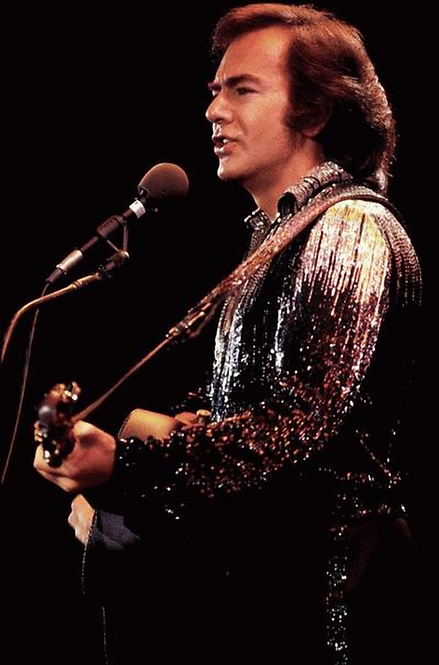
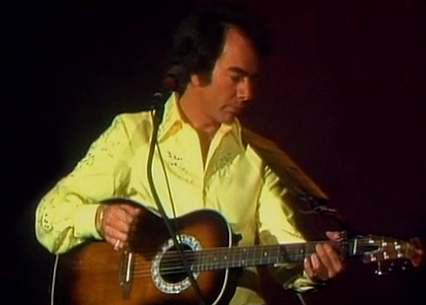
‘Lady-Oh’ is one of those songs crying out to be sung late at night in a smoke filled jazz club, it’s a lament to the unrequited, unattainable and unreachable love -
Lady I, lady I
I’ve been waiting around
Such a long, long time
Believing I could make you mine
Just wanting you
Lady oh
It is a truly beautiful song, and delivered in a way that befits the theme, where you feel that sense of yearning.
The two remaining songs, ‘Signs’ and ‘Jungletime’ are starkly different, ‘Signs’ is a narrative on recognising what your head and heart tell you,
and following your senses and intuition.
‘Jungletime’ is a narrative of Neil’s growing up as a youngster on the streets of Brooklyn, New York.
‘Beautiful Noise’ contains a great mix of songs from Neil Diamond, which reflect his early beginnings as a struggling songwriter in the early 60’s, his passing through the famed “Brill Building” on Tin Pan Alley, to his rise to musical super-stardom, the music is a walk through Neil’s early life, as told through the music.


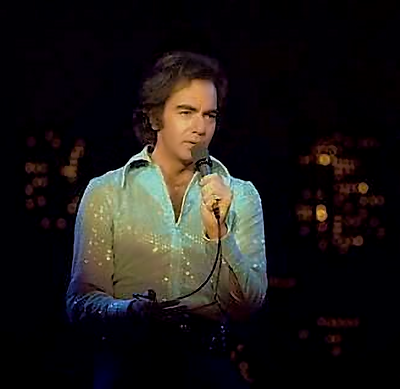
LOVE AT THE GREEK - 1977
Love at the Greek it was, so ‘Love at the Greek’ it’s called.
"This Greek Theatre presentation is the sum total of the efforts of a great many talented people, their names and contributions are listed herein, many thanks to them and to an extraordinary audience." - ND
I was a little wary of doing a piece on a live album, and many might think the obvious choice would be the legendary 'Hot August Night’ of 1972, but I believe much has been said about that particular album, and I wouldn’t wish to exhaust or repeat what has already been said.
‘Love at the Greek' is a different proposition, where I believe this live album has always been regarded as the poor relation to ‘Hot August Night’, and yet, on a production level,
it is exceptional, the audio is fantastic, where Neil’s voice is on top form, the songs are delivered, not in the almost rock style of HAN, but of the polished performer Diamond had become; oozing class, and charisma, you could almost hear the ladies sighing on the album, as Neil serenaded them.
The physical album itself is a wonderful thing, I eulogised about the beauty of albums on a previous piece, and it is true, being a double album, it was an impressive package, opening up to reveal a wonderful image of Neil on stage regaling his adoring audience, who are reflected behind him via an enormous mirrored backdrop, to give the impression he was surrounded. On this wonderful spread is Neil’s own tribute to those who had contributed on the production, and of course the audience, (see header).
The inner sleeves which housed the records were awesome, not your light paper insert, no, these were hewn from the same stock that made up the outer packaging, a strong glossy card, and on it were many stills from the show, featuring a number of guests, Helen Reddy, Harry Belafonte, Diana Ross, and none other than
Henry “The Fonz” Winkler, and of course “swooning” fans, and our hero Neil.
The opening intro is reminiscent of the entrance of a gladiator into the battle arena,
and I suppose being The Greek, is quite fitting, this exciting opening flows into ‘Street Life’ from Neil’s new album at that time, ‘Beautiful Noise’, where songs from said album make up a portion of the performance. This is followed by a new and vibrant ‘Kentucky Woman’ where prior to the song Neil tells the enthusiastic crowd, “It’s very special to be back, and if the weather holds up tonight, we’ll do em all, and I think we’ll do em all, even if it doesn't hold up tonight.”
The next song is possibly the finest live rendition of ‘Sweet Caroline’ on record; it oozes seduction, and thankfully, is free of the bombast that it has acquired over the years, and sung as the lovely breezy tune it was originally intended. ‘The Last Picasso’ allows Neil to move into seduction overdrive, where the delivery is punctuated by deep sighs, and almost sexual groaning, no doubt to the delight of his adoring female fans, surprisingly this song is omitted from the CD format, and yet is a highlight. ‘Longfellow Serenade’ is the final song before Neil introduces the ‘Beautiful Noise’ album songs, these are: “Beautiful Noise’, ‘Lady Oh’, ‘Stargazer’, ‘If You Know What I Mean’, ‘Surviving The Life’, all of these have since become Neil Diamond classics.
‘Glory Road’ opens record two, followed by a never to be forgotten version of ‘Song Sung Blue’ with first guest singer Helen Reddy, of 'Angie Baby' and
'I Am Woman' fame, and then Henry Winkler, where Neil pleads him to “Do it like the “Fonz”, I want the “Fonz” to sing this song, and reluctantly, and almost embarrassingly, Mr Winkler obliges, to the great appreciation of the ecstatic crowd. After the almost bizarre shenanigans of ‘Song Sung Blue’ Neil restores order by launching into ‘Holly Holy’ not quite reaching the level of HAN version, and then ‘Brother Love’s Travelling Salvation Show’
There then follows the highlight of the whole album, the ‘Jonathan Livingston Seagull’ section -
“And here begins a journey, a story as old as time, the tale of the dream and the dreamer, a reflection of that spirit that lives within us all, our case in point, one Jonathan Livingston Seagull.”
What follows is a wondrous musical journey through the skies, as Jonathan seeks to fulfill his dreams and ambitions. It is fabulously done, vocally, and musically by Neil’s always impressive band, a pocket sized, concise version of the celebrated album, but equally wonderful.

The Album, and show closes with, ‘I’ve Been This Way Before’ a song Neil wanted to include in Jonathan Livingston Seagull, but time constraints didn’t allow, it is a rather apt song, given the occasion, and Neil’s past triumphs at the venue.
I believe ‘Love At The Greek’ is equal to HAN for different reasons, here we have a new and mature Neil Diamond, more polished, and learned in the art of live performance, vocally he is no better or worse than on HAN, just different, there is an assuredness in the performance and delivery, and I believe Neil cemented his position as the number one artist in the world, particularly as Elvis Presley’s star had waned, and sadly, a year later he would pass away.
Neil Diamond finishes the performance by stating: “Thank you L.A., you’ve been fantastic.”
I return the compliment to Neil Diamond, who has indeed been fantastic.
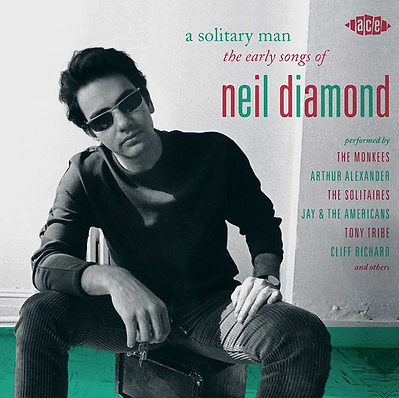
The opening track is ‘Look Out Here Comes Tomorrow’ performed by
The Monkees a band that Neil Diamond provided a handful of hits for, none more successful than ‘I’m A Believer’, which catapulted the group and the young Diamond into the spotlight -
Look out here comes tomorrow
That’s when I have to choose
How I wish I could borrow
Someone else’s shoes
It is unmistakably Neil Diamond, the theme and catchy hook.
Pride of place on the album goes to The Monkees, Cliff Richard, Billy Fury, Jay and the Americans, the Solitaires, and Ronnie Dove.
However, the rest are by no means fillers or lack quality, both in the
song-writing or performance.
A SOLITARY MAN: THE EARLY SONGS OF NEIL DIAMOND
Whilst this album couldn’t be considered as essentially a Neil Diamond album, I include it because without Neil Diamond, there would be no such album, so in all respect, it is every bit a Neil Diamond album.
Prior to his breakthrough as a recording artist, Neil Diamond spent several years paying his dues by writing songs for other performers, honing his talent in the process.
“A Solitary Man, The Early Songs of Neil Diamond” collects twenty four of Diamond’s early compositions, and they are impressive, all performed by other artists between the years 1963 and 1972, the album features some stellar artists of the time, Bobby Womack doing a very soulful version of ‘Sweet Caroline’, British Scots singer LULU with her hit recording of ‘The Boat That I Row’, and a real fine cover of ‘Solitary Man’, by BJ Thomas, of ‘Raindrops Keep Falling On My Head’ fame.
What the album sets out to do, is showcase these songs as individual classics, and highlight their quality, and how they can be easily interpreted.
Most of the recordings are focused on the latter half of the sixties, the time when Diamond started having hits.


CLIFF RICHARD


LULU
JUST ANOTHER GUY - CLIFF RICHARD -
Just another guy that you see around
No more than a face somewhere in a crowd
And when you pass, I’m filled with sorrow
Cause you’re near, and yet you’re so far away...
Neil Diamond has always been dismissive of his earliest song writing efforts, whether that is genuine humility or deadly serious, this is a real treasure for Neil Diamond fans, giving them an opportunity to hear songs never heard before by some surprising stars.
Billy Fury’s turn on ‘Where Do You Run’ is a highlight, as is the Solitaires ‘Fool That I Am’ a wonderful soulful tune that was reminiscent of the day.

BILLY FURY
There are many songs on this collection never heard before, by Neil Diamond, nor the artist covering them, which provides an insight into Diamond’s prolific
song-writing past, and the breadth of his creativity. Most of the songs are young man’s laments, or celebrations of first love, which demonstrate the emerging talent and style that would become a world-wide sensation a few years later.
These songs are an important reference point in Neil Diamond’s career, and a relevant pointer in his progression into becoming the great songwriter he is known as being, it would have been interesting to hear Neil himself cover these songs, but these covers more than showcase Neil Diamond’s evolving style which was to later cement his position in the pantheon of truly great songwriters.

THE SOLITAIRES
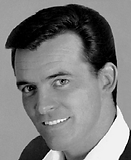
RONNIE DOVE
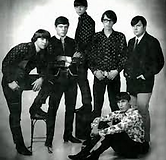
THE WANDERER'S REST
